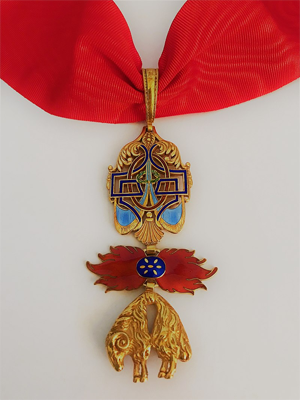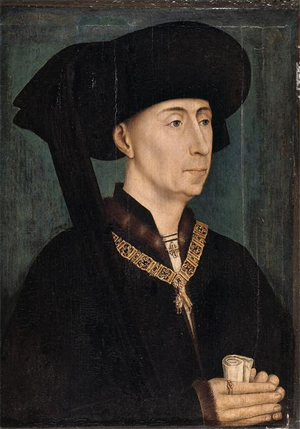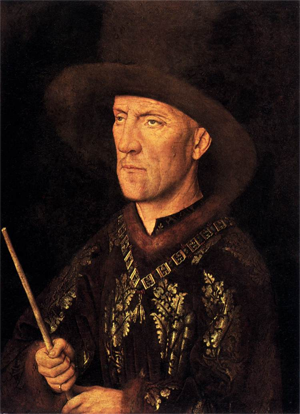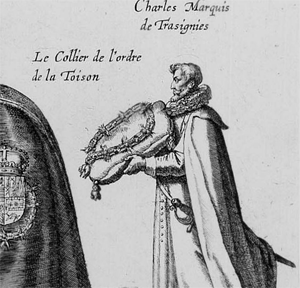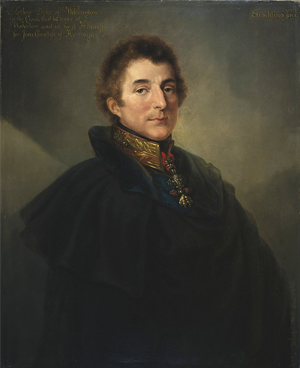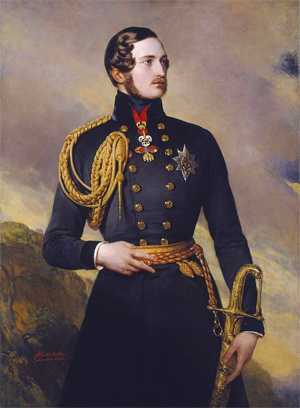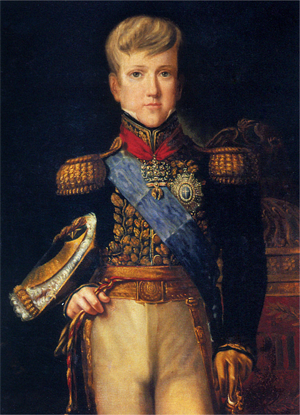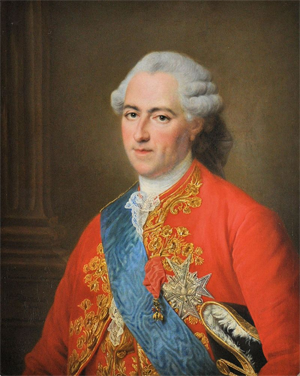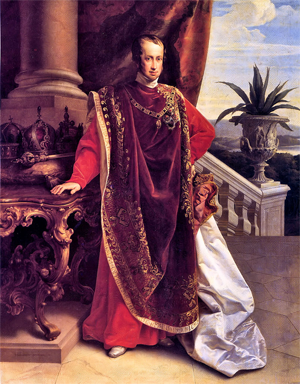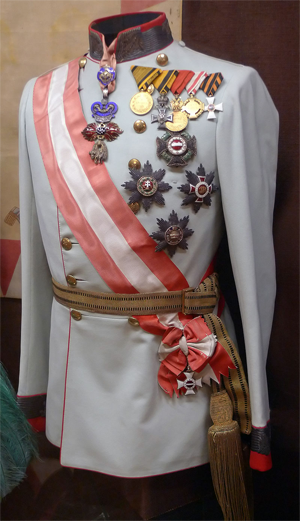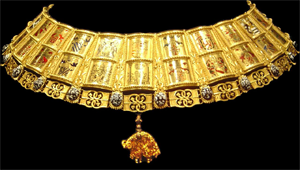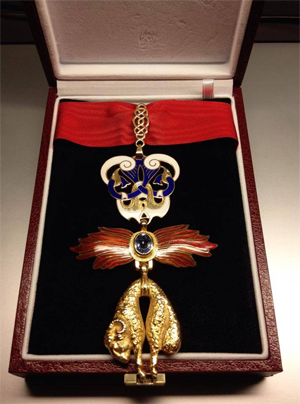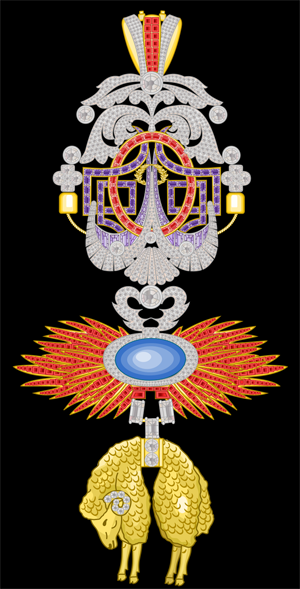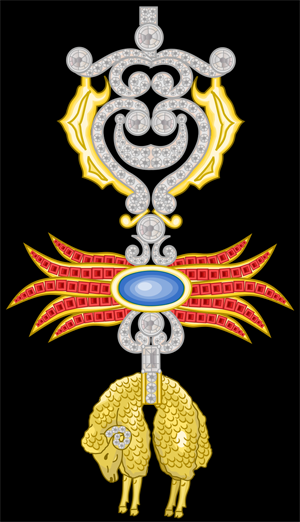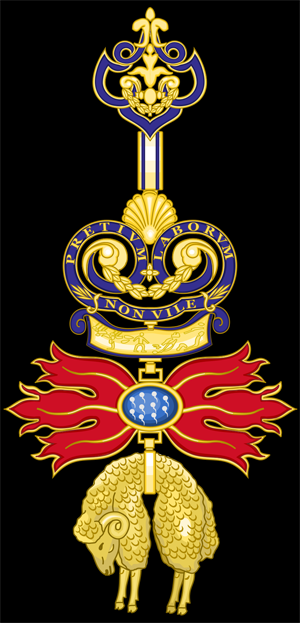by Robert Irwin
2004
NOTICE: THIS WORK MAY BE PROTECTED BY COPYRIGHT
YOU ARE REQUIRED TO READ THE COPYRIGHT NOTICE AT THIS LINK BEFORE YOU READ THE FOLLOWING WORK, THAT IS AVAILABLE SOLELY FOR PRIVATE STUDY, SCHOLARSHIP OR RESEARCH PURSUANT TO 17 U.S.C. SECTION 107 AND 108. IN THE EVENT THAT THE LIBRARY DETERMINES THAT UNLAWFUL COPYING OF THIS WORK HAS OCCURRED, THE LIBRARY HAS THE RIGHT TO BLOCK THE I.P. ADDRESS AT WHICH THE UNLAWFUL COPYING APPEARED TO HAVE OCCURRED. THANK YOU FOR RESPECTING THE RIGHTS OF COPYRIGHT OWNERS.
A tadhkira (memorandum) prepared some time in the 1280s, which gave general instructions for the management of Egypt during the absence of Sultan Qalawun from that land, also provided a fairly clear general picture of where the trouble spots of Cairo were. The memorandum directed those in charge of the city to take special care in patrolling certain areas, especially “the Nile bank, the cemeteries, and ponds such as the Elephant’s Pool (Birkat al-Fil) and the Abyssinian Pool (Birkat al-Habash)...and certain public halls in the Husayniyya Quarter known as Qa'at al-Futuwwa, where turbulent folk hang out.”1
What were the Qa'at al-Futuwwa (Halls of Chivalry), and why were they so dangerous? As we shall see, in the mean streets of al-Husayniyya there flourished a Chandleresque combination of chivalry and gangsterism. In English “chivalry” and “gangsterism” are two words; in medieval Arabic one word may suffice: futuwwa. If the chivalrous aspects of the institution are only briefly dealt with here, this is because they have hitherto received more attention from scholars. The earliest Western studies of this puzzling phenomenon concentrated almost exclusively on them; Joseph von Hammer-Purgstall took the lead with a barmy essay in which he not only identified futuwwa as an Oriental institution corresponding to Western chivalry but also linked the drinking cup of futuwwa initiation with the Holy Grail.2 In general, early Western studies of medieval Islam were bedeviled and distorted by the impulse to look for Eastern equivalents of the chivalry of Christendom. Hence the preoccupation with Saracenic heraldry and Saracen fiefs (as iqtas were understood to be) as well as with the poorly understood phenomena of furusiyya and futuwwa. Western scholars went looking for Saracen knights and Arabian orders of chivalry and, with some difficulty, found them. For example, A. N. Poliak, writing in 1939, offered a misleading description of futuwwa: “The order of knights devoted to Muhammad’s posterity, al-futuwwa, which was headed by the sultan and open to native knights, ceased to exist in the fourteenth century, probably owing to the growing exclusiveness of the ‘Turkish’ nobility.”3 Poliak probably took his lead from much earlier speculations by Étienne Quatremère, who had similarly linked futuwwa with the ashraf (descendants of the Prophet).4
Fata is a young man. Futuwwa literally means “youngmanliness” and, more specifically, the qualities that should be possessed by a young man—honor, generosity, courage, and solidarity with his confreres. (The corresponding Iranian term is javanmardi.)5 Although there is, I think, no evidence for the existence of futuwwa prior to the tenth century, its devotees traced the origins of futuwwa back to 'Ali and, through 'Ali, back to Ibrahim. In the course of the tenth to thirteenth centuries the institution spread through Iran, Iraq, Anatolia, Syria, and Egypt. Futuwwa lodges seem to have been meeting-places for “les jeunes” (to borrow the term used by the historian of medieval France, Georges Duby).6 That is to say, they were places where men who were too young to marry could get together and...well, it depended. Sometimes these lodges were no more than sports clubs; sometimes they acquired political interests and turned into local factions; sometimes they became closely linked with particular crafts and produced something akin to guild solidarity; but sometimes they turned away from the world and dedicated themselves to mystical devotions. In the early thirteenth century, a number of Sufi writers produced treatises that were devoted wholly or in part to the inner aspects of futuwwa. (Most notable among them was Ibn al-'Arabi, who addressed three chapters of al-Futuhat al-Makkiyya to the subject).
The earliest surviving treatise on futuwwa, written in the tenth century by Ibn al-Husayn al-Sulami, stressed the importance of feasting, hospitality, and good fellowship. In the early fourteenth century, Ibn Battuta received a great deal of hospitality in Anatolian towns from the akhis, the Turkish equivalents of the Arabic fityan. Ibn Battuta’s welcome as a visiting stranger may suggest that a primary function of futuwwa lodges was to offer hospitality to visitors, as does the special status of Ibrahim, or Abraham, as one of the patrons of futuwwa, for it was reported of Ibrahim that he never dined alone, since he always had guests at his dinners.7 In the 1180s there was an attempt to regularize the existence of such lodges and to bring them under central control, as the Abbasid caliph in Baghdad, al-Nasir li-Din Allah (r. 1180–1225) declared himself the head of all the futuwwa lodges in Iraq and elsewhere. Al-Nasir’s patronage was perhaps designed to reconcile his Sunni and Shi'i subjects in a broadly tolerant umbrella organization.8 It was also a means of extending the caliph’s influence beyond his frontiers, since he conferred investiture on foreign princes as an honor—a sort of Middle Eastern anticipation of the Burgundian Order of the Golden Fleece.9
However, the elevated status of futuwwa in Iraq was a transitory phenomenon, for in 1258 the Mongols captured Baghdad and put the last of the city’s caliphs to death. Subsequently in 1261 the Abbasid caliphate was revived in Cairo, and the first act of the newly installed caliph was to ceremonially invest Mamluk Sultan Baybars with the trousers of futuwwa—a sort of girding with knighthood. In 1263 Baybars in his turn invested the second of the Cairo caliphs with futuwwa. There was a lot of fuss about these ceremonies at the time, and in the same year the trousers of futuwwa were sent to Bereke of the Golden Horde. Arab chiefs of the Khafaja tribe were also invested with futuwwa. Quite a bit later, in 1292, Sultan al-Ashraf Khalil invested a chieftain of the Hakkari Kurds in Upper Iraq with futuwwa. Thereafter there are no more references to courtly futuwwa. It was defunct.10
But if we move on to the twentieth century and consult a dictionary of colloquial Egyptian, we find fitiwwa defined as “neighborhood strong-man and protector of local interests, bully, tough-guy, hood.”11 Moreover, Sawsan al-Messiri’s article on the sociology of futuwwa in modern Egypt does not deal with any sort of chivalric revival à la Mark Girouard. Rather the article is about neighborhood protection rackets and roughnecks.12 The modern roughnecks discussed by Messiri and others, though they usually belong to gangs, do not appear to have undergone initiation rituals, nor do they trouble to trace the spiritual origins of what they are doing back to 'Ali and Ibrahim.
Staying with modern futuwwa, one finds that it features prominently in modern Egyptian novels and films— most notably the novels of Naguib Mahfouz. Futuwwa toughs make a minor appearance in one of Mahfouz’s early works, as the bullies of schoolchildren in Bayn alqasrayn (published in 1956; the English translation of 1990 is entitled Palace Walk). Their importance grows considerably in his later fiction. Mahfouz’s religio-sociological allegory, Awlad haratina (1967; translated in 1972 as Children of Gebelawi), is ostensibly devoted to futuwwa toughs who dominate the haras. The rival strong-arm men in the hara chronicled by Mahfouz are all descendants of Jabalawi (namely, God), and the novel only ends with the explosive destruction of these small-time local gangsters. Mahfouz’s novel Malhamat al-harafish (1977; translated in 1994 as The Harafish), an epic saga of urban riffraff, is similarly dominated by gang wars and intrigues. The very word used by Mahfouz in his title, harafish, is no longer part of modern Egyptian. In a study of medieval urban life under the Mamluk sultans, Ira Lapidus described harafish as “beggars and menials” who “formed a turbulent and dangerous mob.”13 As I have noted in a review of this novel, Mahfouz in Malhamat al-harafish has shaken off Western fictional models and “gone back to the oral storytelling tradition and revived the traditional romance, which dealt with the activities of such legendary urban criminals as Mercury Ali, Crafty Delilah, and Ahmad the Sickness. Such tales, which celebrate the craftiness and courage of rogues, have always been popular with the futuwwa gangsters who ‘protect’ the various quarters of Cairo.”14
In portraying these toughs, Mahfouz seems to have been drawing on childhood memory as much as on imagination. Interviewed by the novelist Gamal al-Ghitany, he looked back with actual nostalgia on the toughs of the Gamaliyya quarter of Cairo in the opening decades of this century—in particular, their storming of the local police station had lodged in his memory.15 The futuwwa toughs of Mahfouz’s novels are not always unmitigated villains, and Mahfouz’s attitude to the real life social phenomenon was and is tinged with ambivalence. He has gone on record with the view that the futuwwa leaders of the 1920s and 30s were protectors of the quarters rather than their oppressors, adding, however, that “as with some rulers, the protector sometimes turned into a usurper.”16 Mahfouz, who was involved in the film industry for much of his career, scripted the screenplay of al-Futuwwa. This film, directed by Salah Abou Seif and released in 1957, dealt with the unedifying career of Zaydan, the “Vegetable King,” a racketeer who used violence and corruption to dominate the vegetable market. Haridi, a naive immigrant newly arrived from the countryside, rallies the neighborhood to overthrow Zaydan, but in the course of the struggle Haridi himself becomes corrupted and in his turn becomes the “Vegetable King.”17 In the 1950s Mahfouz was also involved in the making of Tawfiq Salih’s Futuwwat al-Husayniyya (Tough-guys of the Husayni Quarter), a period gangster movie set in 1905.18
Indeed futuwwa has come to designate a whole genre of modern Egyptian cinema. As the authors of Arab and African Film Making observe, “The word futuwwa in the Middle Ages and in religious contexts generally designated ideals of chivalry and brotherhood. By now, in Egypt at least, its meaning has degenerated so that it denotes a kind of bully system, a sort of marketplace Mafia, in which any boss who loses his iron grip on his followers will rapidly be replaced by the next-toughest aspirant around.” (As Lizbeth Malkmus notes, this is perhaps faintly reminiscent of the Khaldunian cycle of corruption and decay.)19 In the films devoted to futuwwa, the plot usually revolves around the theme of an honorable man becoming corrupted in the course of trying to fight the system (as in Salah Abou Seif’s film referred to above). The futuwwa system always wins (just as Al Pacino is progressively corrupted in The Godfather). In futuwwa films and the Coppola Godfather series alike there is great play with the themes of honor and shame, though the honor in question is, of course, that of thieves. This gangster corruption quite often carries overtones of political allegory, and the political fatalism of such films is vaguely reminiscent of the cynical watchword of di Lampedusa’s great novel, The Leopard: “Things must change in order that they stay the same.”
However most of the above is by way of digression. To return (a little reluctantly) to the Middle Ages, it seems that some time between 1261 and modern times a sea change took place in the nature of futuwwa—a descent from caliphal patents of honor to muscling in on small-time rackets in the local markets of Cairo. And in fact Qalawun’s tadhkira, quoted earlier, strongly suggests that by the 1280s futuwwa had already acquired pejorative connotations. It seems that al-Husayniyya was the chief stamping ground of the adherents of futuwwa. This area lay to the north of Qahira proper, outside the Bab al Futuh. From Fatimid times onwards it had been settled by low-grade troopers, and in the early Mamluk period the area continued to provide lodgings for military men. In the 1260s, during the reign of Baybars I, the suburb was further colonized by immigrants of Mongol origin, who had fled to the Mamluks from the Mongol Ilkhanate; still more of them arrived in the 1290s. Baybars probably built his mosque on the northern edge of Husayniyya in order to encourage colonization in the area. In the thirteenth century Husayniyya was the most dangerous of all the suburbs of Cairo, for it was the home of the “Sons of al-Husayniyya,” otherwise known as the harafish.20 The harafish appear to have had a degree of organization and, at times at least, a recognized overall leader, a Sultan of the Harafish.21
In a late Syrian version of the Sirat al-Zahir Baybars, the medieval folk epic devoted to the largely fictional exploits of the historical Sultan al-Zahir Baybars (1260– 77), we are told that Baybars as a young mamluk was in the service of an amir called Najm al-Din al-Bunduqdari, who had his palace in al-Husayniyya. (There is, of course, no truth in any of this.) In this quarter the young Baybars found his friends and allies among the good-hearted thieves and beggars who described themselves as the Sons of Husayniyya.22 In general, the Sira takes a very benign view of the harafish and other lowlife types who inhabited al-Husayniyya and the other squalid suburbs of Cairo, such as Bab al-Luq. Usta 'Uthman, “Flower of the Gangsters,” a liveryman and one of the main heroes of the popular cycle, is identified as being one of the shuttar (and I will come to the significance of this term shortly).
In the real, non-fictional world, al-Husayniyya was also a recognized recruiting ground for zu''ar, or neighborhood militias of young cudgelmen, and was notorious for vice and crime. As the already-mentioned tadhkiras indicate, al-Husayniyya was an area over which it was necessary to exercise special vigilance. It was perhaps also not entirely coincidental that Shaykh Khadr al-Mihrani, the populist, rabble-rousing Sufi shaykh and spiritual guru of Baybars, had his zawiya just outside the Bab al-Futuh.23 According to al-Maqrizi, in the early fourteenth century the suburb improved a bit, becoming gentrified to some extent even though it was still the place to watch acrobats, prizefighters, and other street performers. But then in the 1360s the quarter was attacked by a plague of worms that ate food, paper, and wood. Roofs collapsed, and many houses were abandoned. A flood followed in 1375. The suburb reverted to its slummy ways and in al-Maqrizi’s own time—the early fifteenth century—the place was miserable, underpopulated, and controlled by zu''ar racketeers.24 According to al-Qalqashandi, the soldiers who used to live in al-Husayniyya moved to lodgings closer to the Citadel. However, later yet in the fifteenth century, the area was particularly favored by Qaytbay, whose powerful ally, the amir Yashbak, built his qubba there.25 Moreover, there is evidence of continued settlement in Ottoman times, when the butchers and abattoirs were concentrated in this area. From the eighteenth century onwards, the butchers, a notoriously tough body of men, linked their activities with the Sufi Bayumiyya order, which was powerful in the quarter.26 During Bonaparte’s occupation of Egypt, al-Husayniyya, with its turbulent population, proved to be one of the main foci of resistance to the French, so that in the end the French were driven to attempt to raze at least part of the quarter.27
As has already been noted, Mongol immigrants were settled in al-Husayniyya as early as the 1260s. In the years 1294 to 1296 a new wave of immigrants, the Oirats (that is, the western tribe of Mongols, also known as Kalmuks), deserted to the Mamluks, and Sultan Kitbugha settled them in al-Husayniyya. The Arab chroniclers remarked on a number of things concerning the Oirats: First, that they were not Muslims and therefore did not observe Ramadan and also un-Islamically clubbed horses about the head before eating them. Second, that they were astonishingly beautiful, and therefore Oirat women were much sought-after as brides by the Mamluk elite. Also, according to al-Maqrizi’s Khitat, the Oirats “became known for their zu'ara (gangsterism) and shuja'a (boldness), and they were called al-Badura. So an individual Oirat might be called al-Badr such-and-such. They adopted the dress of futuwwa, and they carried weapons. Stories about these people proliferated.”28 Later on their fortunes declined, and many ended up working as menial servants in the Citadel.29 These Mongol immigrants may be seen as the medieval Cairene precursors of the Sicilian mafiosi of New York. It also seems likely that they organized their activities on the basis of futuwwa lodges. (Indeed it is possible that there was no such thing as popular futuwwa in Egypt prior to the arrival of the Oirats and that they brought its rituals with them from Ilkhanid Iraq. While al-Maqrizi clearly did not think that the Oirats were Muslims, they may still have thought of themselves as such.)
If one turns to al-Turkumani al-Hanafi’s treatise on bid'a, or irreligious innovation, entitled Kitab al-luma' fi ’l-hawadith wa ’l-bida', which was completed around 1300, one finds the relationship between membership in futuwwa and disreputable behavior confirmed. According to al-Turkumani, futuwwa is something that angers God and delights Satan, for it fosters crime and sedition. The young men in futuwwa lodges organize themselves into militias. They learn to become handy with knives, and if one of their number should be apprehended and taken off to prison they will mass and organize to rescue him.30 Interestingly Ibn Battuta, who was in Egypt in the 1320s, reported the harafish massing to enforce the release from prison of one of their patrons, the amir Tashtamur Hummus Akhdar.31 The (somewhat Masonic) practice of members looking after each other was taken to such an extreme that, according to al-Turkumani, a man might even prostitute his wife in order to support his needy brethren.
Equally reprehensible for the pious Muslim was the futuwwa’s un-Islamic initiation rite, which required the drinking of a cup of water and salt and featured another, even more dubious, practice by the group’s elder, who stripped the blindfolded amrad, or beardless boy, and invested him with the trousers of futuwwa. The whole business of eyeing undressed and beardless boys was an abomination. As al-Turkumani put it, “the concupiscient glances of the older men are poisoned arrows from the quiver of Satan.”32 The homosexuality of the gaze was, according to him, as damnable as any other form of homosexuality. If members of futuwwa lodges did indeed sit and watch as beautiful youths were undressed before their eyes, then this practice may be linked to certain rather controversial Sufi meditation practices. In medieval Persia the religious contemplation of the unbearded was termed shahid bazi, or “witness play.”33
However, to return to al-Turkumani’s case against futuwwa, another aspect of the criminality of this sort of brotherhood was the readiness of its members to take up cudgels against the agents of the state (ghulman alshurta wa-wulat al-Muslimin). Futuwwa members prided themselves on their skill with weapons, but al-Turkumani piously observed that a true fata should not be identified by his skill with a knife but rather by his generosity to the needy. A little later in 808, al-Turkumani produced a brief risala wholly devoted to futuwwa, in which he noted that its apologists presented the deliverance of people from prison or from enforced legal penalties as a charitable activity: the big man (al-kabir) marches along at the head of his following and says, “Deliver your brethren in futuwwa,” but the right reply to this is “Listen, O you of little courage (muruwwa), this is all the deceit of the devil (talbis Iblis), and his aim is to lead you away from the way of the Prophet.”34 Futuwwa, as al-Turkumani viewed it, was one of the worst bida's of the age, and he treated with brisk contempt its partisans’ attempt to link it with caliphal futuwwa. The attempt to trace its lineage back to 'Ali was, if anything, even more outrageous. Al-Turkumani’s discussion of futuwwa comes in the fifth fasl of the Kitab al-Luma'.35 It follows a chapter devoted to the evil of chess and precedes the one on the wickedness of brotherhoods devoted to hunting.
Al-Turkumani also wrote a short treatise devoted solely to attacking futuwwa, and this has a colophon testifying that it had been endorsed by Ibn Taymiyya and, allegedly, by all the muftis of Egypt.36 Al-Turkumani had indeed studied under Ibn Taymiyya, and it is plausible that it was his teacher who had taught him to loathe futuwwa, for the latter had also issued a fatwa against the institution. In it, Ibn Taymiyya indicated that all sorts of vices might flourish in these meetings of young men. According to him, a futuwwa meeting was known as majlis al-daskara, or “session of the village.” He added that daskara had been a neutral word, but in his time it acquired pejorative overtones, because it was applied to gatherings for the purpose of fornication, wine drinking, and singing.37 The entry on daskara in Lane’s Arabic-English Lexicon offers the meaning, “a town or village,” but two of the earlier definitions are more germane: “a building like a qasr, which is surrounded by houses, or chambers, and in which the vitious or immoral (shuttar) assemble”; or “houses of the foreigners, a'ajim, in which are wine and instruments of music and the like.”38 Incidentally, al-Turkumani in his Risala on futuwwa twice refers to the ritual of induction as a tazkira. Although Labib proposed emending this to tadhkira, another possibility is that tazkira represents a mishearing of daskara.
A fatwa by the fourteenth-century Aleppan Zayn 'Umar al-Din b. al-Wardi (1292–1349) echoed al-Turkumani’s writings in denouncing the prominence of liwat, or homosexuality, in futuwwa.39 It is indeed easy to imagine that the futuwwa’s cult of the young man may in certain circumstances have become confused with a different sort of cult of beardless youths. A number of litterateurs in the Mamluk period, among them al-Badri and al-Nawaji, produced anthologies devoted to the joys of the beautiful boy. Al-Badri’s was entitled “The Shining Dawn: On the Description of Fair Faces”; al-Nawaji, who died in 1455 and is better known for his anthology on wine-drinking, the Halbat al-kumayt, compiled at least two treatises on beautiful young men: “The Throwing-off of Shame in the Description of the First Growth of the Beard,” and “The Prairie of the Gazelles in the Purity of the Beauty of Servant Boys.” Mamluk moralists were also much vexed by the mukhannath, or transvestite prostitutes, who worked the streets.40
Ibn Taymiyya, al-Turkumani, and other Mamluk experts on bid'a rejected the claim of members of popular futuwwa lodges that their chain of initiation could be traced back to the Abbasid caliph al-Nasir. In so doing, they denied any link between popular Cairene futuwwa of relatively recent date and the more respectable and longer-established futuwwa of the courts. On a related issue, studies of twelfth-century Iraqi futuwwa have suggested that one of al-Nasir’s aims in promoting the institution was to reconcile Sunnism and moderate Shi'ism under its umbrella. The futuwwa’s slogan La fata illa 'Ali ('Ali is the youth par excellence) and its tracing its lineage of initiation back to 'Ali might be taken as hinting at Shi'i aspects to the organization, and it is probably true that Shi'ism was more of a vital force in Mamluk Egypt than has hitherto been realized. However, as far as the Mamluk period and Mamluk sources are concerned, there is no real evidence to suggest that futuwwa was linked to Shi'i sympathies or practices—and this was not one of Ibn al-Turkumani’s or Ibn Taymiyya’s grumbles. (Incidentally, Bulliet in his work on tenth-to-twelfth-century Nishapur found that members of futuwwa, when their affiliation was identifiable, were invariably Shafi'ite Muslims.41)
Although Ibn Taymiyya and al-Turkumani went out of their way to denounce various aspects of futuwwa, Abu 'Abdallah b. al-Hajj al-Abdari (1336–66?), who similarly wrote a lengthy treatise on bid'a, does not seem to have noticed the phenomenon at all. Ibn al-Hajj did deal disapprovingly with homosexuality, gazing on men, singing and dancing, various unacceptable Sufi rituals, and dodgy artisanal and commercial practices, but he does not discuss futuwwa (unless I have missed it). The evidence is too fragmentary and relies too much on the apparent silence of the sources for one to come to any firm conclusion here, but what this suggests is that popular, quasi-criminal, ritualized futuwwa was a phenomenon of limited duration in medieval Egypt. The futuwwa-loving Oirats had arrived at the end of the thirteenth century. Ibn Taymiyya and al-Turkumani lived and wrote at the end of the thirteenth and the beginning of the fourteenth century.42 Gabriel Baer, who wrote several excellent studies of guilds in the Ottoman period, suggested that there was an essential continuity between medieval Egyptian futuwwa and the craft-based guilds of Egypt in the Ottoman period.43 However, the supposed continuity is doubtful. I have come across no references to futuwwa in the Mamluk lands in the late fourteenth or the fifteenth century. Ibn al-Turkumani had urged the Mamluk authorities to ban futuwwa, and it is indeed possible that recommendations from him and other like-minded “ulema” were eventually heeded. A new wave of futuwwa manuscripts was produced in Egypt in the seventeenth and early eighteenth centuries, but, although al-Jabarti’s 'Aja'ib al-athar contains plentiful information about criminal activity and popular disturbances in Ottoman Egypt, the word futuwwa does not seem to be in the author’s vocabulary. Compared to futuwwa, the brotherhood of the harafish had a longer existence. The first reference to the harafish was in 1298, but they were still a power to be reckoned with at least as late as 1516, when the shaykh of the harafish accompanied Qansuh al-Ghuri on his ill-fated journey to Syria.44
Futuwwa seems to have been linked, however vaguely, with another and more long-lived phenomenon, one that at first blush would not appear urban at all: the hunting lodge. Futuwwa treatises written during the caliphate of al-Nasir had spelled out the hunting privileges of young men, giving them special license to hunt with crossbows and listing the manasib, or fourteen noble species of birds that they could honorably hunt.45 According to Ibn Khaldun, the caliph was crazy about crossbows and pigeons.46 With respect to the belt of futuwwa, Louis Massignon has observed that “it was a military belt worn by an archer, a ‘tir-bent,’ an arrow belt, the insignia of the guild of ‘couriers’ (shatir, whence the Indian shattar, religious order, derives...).”47
It is noteworthy that, after al-Turkumani had finished discussing the wickedness of futuwwa lodges, he then immediately turned to the use of the crossbow. Hunting leagues that used the crossbow were reprehensible, according to him, because they were liable to break the Islamic law on slaughtering. The crossbow was cruel to birds and proscribed in Hadith. The shuttar huntsmen were wicked because they valued marksmanship more than piety. They were also bad because they did not mind admitting into their ranks homosexual men—nor, for that matter, Jews and Christians. Shuttar preferred to swear by the dirt, rather than by God. All that mattered to these awful people was the ability to kill certain birds—the manasib birds. If one succeeded, one was acclaimed a shatir. Their group solidarity and their unquestioning obedience to their leaders were also to be abominated. So was their trampling through other people’s fields. Although a member of such a group is called a shatir, or cunning one, according to al-Turkumani, the only real cunning people are the good Muslims.48 (Interestingly and curiously, Ibn Turkumani’s aversion to companies of archers finds a parallel in the Western world in the fifteenth-century Malleus Maleficarum, whose authors, Krämer and Sprenger, wrote of “the witchcraft of archers.” According to the famous inquisitors, such skill as certain crack archers possessed could only be explained by their having entered into a pact with the devil.49 Also, more germanely with respect to Islamic archery’s association with vice, the sixth chapter of al-Badri’s treatise on beautiful boys was specifically devoted to archery and hunting and to the erotic prospects afforded by these activities.) Al-Turkumani’s view that hunting with a crossbow was illicit was backed up, to some extent at least, by Ibn Mangli’s fourteenth-century treatise on hunting, Uns al-mala bi-wahsh al-fala, in which the author states that it is forbidden to hunt and kill animals using blunt weapons or projectiles, such as the balls fired from a bunduqa.50
In medieval Arabic dictionaries, a shatir (plural: shuttar) was defined as a wrongdoer, a clever thief, someone who is agile and witty or swift on his feet. But in the usage of al-Turkumani and other medieval Egyptian writers, the word was also quite specifically associated with hunting and the use of the bow. While a shatir and a fata were not necessarily one and the same man, Ibn Taymiyya discussed futuwwa and assemblies of archers in one and the same disapproving breath. These are people, he claimed, who have taken an oath of infidelity, and who celebrate together with feasting.51 It seems that they formed gangs, somewhat similar to the Mohawks of eighteenth-century London or the Apaches of Paris in the 1920s. If the adherents of futuwwa excelled with the knife, the shuttar were more versatile, being enthusiasts also of single-stick fencing and wrestling as well as archery. In the early fourteenth century the sports and enthusiasms of the shuttar and like-minded wastrels briefly enjoyed court favor under Sultan al-Muzaffar Hajji (r. 1346–47). This young sultan enjoyed watching the single-stick fencing of the awbash (riffraff). He gambled on racing pigeons and donned leather breeches in order to wrestle with servants and lowlife types. (His other enthusiasms were polo and torture.)52
In the folk epic devoted to Baybars, which we have already mentioned, Baybars as a young mamluk was initiated into a hunting lodge in Damascus with the assistance of Fatima bint al-Awqasi, daughter of the bowyer, after he had proved himself by shooting at the manasib birds with a crossbow. The corporation of archers to which he was admitted was under the leadership of a shaykh and a naqib; it had forty members and was dedicated to hunting the ten noble breeds of bird. On the day of the hunt, each sub-group of four archers was assigned one particular breed to hunt. After this first round, the winner—in the Sira, the winner was of course Baybars—then had to use his crossbow to bring down forty birds, four from each species. The anonymous author concluded his account of Baybars’s prowess as an archer with the lament that those were the days when people preferred hunting to games of tric-trac or dominoes.53
The above was fiction, and moreover fiction from Ottoman Syria, but it may well reflect medieval realities. Historically, such jolly huntsmen may have been capable of providing sizable armed militias in times of crisis. When in 1524 Ahmad al-Kha'in, the Turkish governor of Egypt, rebelled against Istanbul, he called upon the support of the zu''ar and shuttar to help him dislodge the janissaries from the Citadel of Cairo. According to the geomancer and historical romancer Ibn Zunbul, the two leaders of the shuttar, Shaban al-Shagharti, Head of the Bowyers, and Ahmad al-Shirbini chose from their followers a squad to enter the Citadel by an underground passage and so come upon the janissaries unawares. Later on, when the Ottomans launched a counteroffensive, Ibn Zunbul tells us that the shuttar, along with the zu''ar, the riffraff, and every dog and his brother, were among the last of the rebel’s supporters.54
The tales of The Thousand and One Nights teem with with shuttar who get into scrapes but who, being infinitely resourceful, use artful dodges to get themselves out of those scrapes.55 Some of the shuttar featured in the Nights, such as Crafty Delilah or Calamity Ahmad, had epics in their own right devoted to them in medieval Egypt. Ali Zaybaq was the most famous of the shuttar to feature in the Nights. In a historico-literary analysis of “The Adventures of Mercury Ali of Cairo,” André Miquel has suggested that in this story, notionally set in Harun al-Rashid’s Baghdad, Ali, who eventually wins the caliph’s admiration and his blessing on Ali’s marriage to Delilah’s daughter Zaynab, is in some sort of metaphorical sense being inducted into Iraqi futuwwa.56 Other shuttar were specifically immortalized (or should that be “immoralized”?) in some of the stories added to later Egyptian recensions of Alf layla walayla, among them, “The Sharper of Alexandria and the Chief of Police,” “The Chief of Qus Police and the Sharper,” “The Simpleton and Sharper,” “The Tale of the Sharpers with the Shroff and his Ass,” and “The Story of the Three Sharpers.” Not all shuttar were all that sharp. Several stories indeed are devoted to their stupidity—stupidity heightened in some cases by drugs. And there is evidence that at least one real villain in fifteenth-century Egypt took to calling himself after the fictional Ahmad al-Danaf, or Calamity Ahmad. He was executed in 1485.57 In Cairo the legendary villains enjoyed the status of Robin Hood or Dick Turpin. The cult of such fictional “heroic” villains can be seen as a later and more vulgar version of the cult of crime and lowlife that was such a striking feature of the culture of the literary elite in Buyid Iraq, as represented by, for example, the tenth-century vizier and patron of Abu Dulaf, al-Sahib b. 'Abbad.58 Moreover, the cult of the criminal can, of course, be traced further back yet, to the semi-legendary lives of the saa'lik poets of pre-Islamic Arabia.
As noted above, the caliph al-Nasir li-Din Allah had been an enthusiast for futuwwa, hunting with the crossbow, and pigeons. Like crossbow hunting, pigeon fancying could have disreputable undertones in medieval Islamic society, and indeed pigeon racing was condemned by most religious authorities. A pigeon racer could not bear witness in a court. According to its enemies, pigeon racing was invented by the citizens of Sodom (so the sport is of some antiquity);59 professed pigeon fanciers used the excuse of pursuing errant pigeons to break into houses or to spy upon women from the rooftops. It was also forbidden to hunt pigeons, since it was not halal to consume them. According to al-Jahiz’s treatise on animals, the rearing and flying of pigeons was a privilege of fityan.60 In The Thousand and One Nights story, “The Rogueries of Delilah the Crafty and Her Daughter Zaynab the Cony-Catcher,” Crafty Delilah’s father had been the caliph’s master of carrier pigeons, and eventually Delilah is awarded the same post. In another story, “The Adventures of Mercury 'Ali of Cairo,” 'Ali pretends to have eaten Delilah’s pigeons. So, to begin to conclude, one finds a skein of ill-defined yet indubitable connections between the young men involved in pigeon fancying, crime, hunting, boy-ogling, and the rituals of brotherhood.
Such lowlife denizens of Cairo’s poorer quarters can be seen as marginal figures—as subversives and representatives of a counterculture. However, it is doubtful that this was their own perspective on the matter, for their gangs and associations played a central role in the functioning of the city. As far as most of the inhabitants of Cairo’s haras were concerned, it may be that it was the Mamluk elite whom they perceived as the marginal men and the representatives of an alien counterculture. The defense of poor and humble citizens from the oppression of the alien Turkish soldiery was surely one of the most important roles of futuwwa lodges and similar groups.
This study concentrated on the futuwwa and shuttar groups, but al-Husayniyya and the Bab al-Luq teemed with other “hushrat,” or “human vermin.” I have said little about the zu''ar and the harafish (for these ruffians have been well studied by Brinner and Lapidus). I have said nothing at all about the ju'aydiyya, or Curly-Haired Ones (possibly a confederation of Gypsy toughs: remarkably little work has been done on the Gypsies in the medieval Near East). According to a footnote in Quatremère’s Histoire des sultans mamlouks, Tenreiro claimed that Gypsies (Bohemiens) were called in Arabic “Xatres,” plausibly shatir, plural: shuttar.61 Nor have I had time to research and discuss the tawwabun, or repentant bandits who turned “sultan’s evidence” and became policemen. Nor have I discussed the subdivisions of the Banu Sasan, as listed in al-Zarkhuri’s conjuring manual—including the Ashab al-Mim (or professional treasure hunters), the false ascetics, the Halwati snake-charmers, and the Saramiti occultists.62 Yet the lives of all these strange people deserve at least a footnote in the turbulent history of Cairo.
London, United Kingdom
_______________
NOTES
1. Shafi' b. 'Ali, Fadl al-Ma'thur, Oxford, Bodleian MS Marsh 424, fol. 94b. This is the third of three tadhkiras addressed to Qalawun’s son al-Salih in Shafi' b. 'Ali’s life of Qalawun. It was translated in part (with no indication of the source) in D. S. Margoliouth, Cairo, Jerusalem, and Damascus (London, 1907), p. 79. For another tadhkira from the same period, see Ibn al- Furat, Ta'rikh al-duwal wa al-muluk, ed. Q. Zurayk (Beirut, 1942), vol. 7, pp. 196–200. It dates from 679/1281 and was drafted by Ibn al-Mukarram. The tadhkira in Ibn al-Furat’s chronicle emphasizes the need to police Husayniyya, but does not actually mention halls of futuwwa. The following works discuss the 679 tadhkira as given in Ibn al-Furat: Linda Northrup, From Slave to Sultan: The Career of al-Mansur Qalawun and the Consolidation of Mamluk Rule in Egypt and Syria (679–689 A.H. / 1279– 1290 A.D.), Freiburger Islamstudien, vol. 18 (Stuttgart, 1998), pp. 209–10; Léonor Fernandes, “On Conducting the Affairs of State: A Guideline of the Fourteenth Century,” Annales Islamologiques, vol. 24 (1988), pp. 81–91; and Sato Tsugitaka, State and Rural Society in Medieval Islam (Leiden, 1981), pp. 105–23. Axel Moberg, “Regierungspromemoria eines ägyptischen Sultans,” in Festschrift Sachau, ed. Gotthold Weill (Berlin, 1915), pp. 406–21, translated and commented on the first of the three tadhkiras in Fadl al-Ma'thur, fols. 82b–89b; see Robert Irwin, The Middle East in the Middle Ages: The Early Mamluk Sultanate 1250–1382 (Beckenham, Kent, 1986), pp. 72–73.
2. J. von Hammer-Purgstall, “Sur la chevalerie des arabes antérieure à celle de l’Europe, et sur l’influence de la première sur la seconde,” Journal Asiatique, 4th series, vol. 13 (1849), pp. 5– 14.
3. A. N. Poliak, Feudalism in Egypt, Syria, Palestine and Lebanon (1250–1900) (London, 1939), p. 15.
4. Étienne Quatremère, ed., Histoire des sultans mamlouks de l’Égypte, écrite en arabe par Taki-Eddin-Ahmed-Makrizi, 2 vols. (Paris, 1845), vol. 1, pt. 1, pp. 58–59n.
5. On the Iranian tradition, see Morteza Saraf, ed., Traités des compagnons- chevaliers (Tehran and Paris, 1973) (Persian text with analytical introduction in French by Henri Corbin); Julian Baldick, Mystical Islam: An Introduction to Sufism (London, 1989), pp. 91–92; Seyyed Hossein Nasr, “Spiritual Chivalry,” in Islamic Spirituality: Manifestations , ed. Seyyed Hossein Nasr (London, 1991), pp. 304–15.
6. Georges Duby, “Au XIIe siècle: les Jeunes,” Annales, économies, societés, civilisations 5 (1964): 835–46.
7. On this sort of futuwwa in general, and on futuwwa in Anatolia more specifically, see F. Taeschner, Zunfte und Bruderschaften im Islam (Zurich, 1979).
8. Angelika Hartmann, Al-Nasir li-Din Allah (1180–1225) (Berlin, 1975), pp. 92–135; Herbert Mason, Two Statesmen of Mediaeval Islam: Vizir Ibn Hubayra (499–560 AH/1105–1165 AD) and Caliph an-Nâsir li Dîn Allâh (553–622 AH/1158–1225 AD) (The Hague, 1972), pp. 118–26; Seyyed Hossein Nasr, “Spiritual Chivalry,” pp. 304–15.
9. See, for an example of this, R. S. Humphreys, From Saladin to the Mongols (New York, 1977), p. 138.
10. On courtly futuwwa under the Mamluks, see Taeschner, Zunfte und Bruderschaften im Islam, pp. 219–25; idem, “Die islamischen Futuwwabünde: das Problem, ihrer Entstehung und die Grundlinien ihrer Geschichte,” Zeitschrift der Deutschen Morgenländischen Gesellschaft, n.s. vol. 12 (1934): 38–39.
11. Martin Hinds and El-Said Badawi, A Dictionary of Egyptian Arabic, Arabic-English (Beirut, 1986), p. 641.
12. Sawsan al-Messiri, “The Changing Role of Futuwwa in the Social Structure of Cairo,” in Ernest Gellner and John Waterbury, eds., Patrons and Clients (London, 1977), pp. 239–53.
13. Ira Lapidus, Muslim Cities in the Later Middle Ages (Cambridge, MA, 1967), p. 179.
14. Robert Irwin, “Hoodlums, Harlots, and Holy Men,” Washington Post Book World (April 10, 1994): 10.
15. Mahfouz par Mahfouz: Entretiens avec Gamal Ghitany (Paris, 1991), pp. 25, 54–56, 61–62.
16. Mahfouz, interviewed in al-Musawwar (October 21, 1988): 10– 19, 68–73; quoted in Rasheed El-Enany, Naguib Mahfouz: The Pursuit of Meaning (London, 1993), p. 3.
17. Yves Thoraval, Regards sur le cinéma égyptien 1875–1975 (Paris, 1988), pp. 62–63; Magda Wassaf, ed., Égypte, 100 ans de cinéma (Paris, 1995), pp. 151–52; Viola Shafik, Arab Cinema: History and Cultural Identity (Cairo, 1998), pp. 135–37.
18. Hashim al-Nahas, “The Role of Naguib Mahfouz in the Egyptian Cinema,” in Critical Perspectives on Naguib Mahfouz, ed. Trevor Le Gassick (Washington, 1991), pp. 166–67.
19. Lizbeth Malkmus and Roy Armes, Arab and African Film Making (London, 1991), pp. 101–2.
20. Lapidus, Muslim Cities, pp. 176, 293; Doris Behrens-Abouseif, “The North-Eastern Extension of Cairo under the Mamluks,” Annales Islamologiques 17 (1981): 157–89; Jonathan Bloom, “The Mosque of Baybars al-Bunduqdari in Cairo,” Annales Islamologiques 18 (1982): 45–78.
21. William M. Brinner, “The Significance of the Harafish and Their Sultan,” Journal of the Economic and Social History of the Orient 6 (1963): 190–215.
22. Georges Bohas and Jean-Patrick Guillaume, trans., Roman de Baïbars, 10 vols. (Arles, 1985): vol. 1, Les enfances de Baïbars.
23. On Khidr, the disreputable holy man, see E. [Ashtor] Strauss, “Sheich Hidr: Ein Beitrag zur Geschichte der Juden in Damaskus,” Wiener Zeitschrift für die Kunde des Morgenlandes 44 (1937): 227–40; P. M. Holt, “An Early Source on Shaykh Khadir al- Mihrani,” Bulletin of the School of Oriental and African Studies 46 (1983): 33–39.
24. Ahmad b. 'Ali al-Maqrizi, Kitab al-mawa'iz wa ’l-i'tibar fi dhikr al-khitat wa ’l-athar (henceforth Khitat), 2 vols. (Cairo: Bulaq, 1853–54), vol. 2, pp. 22–23.
25. On Husayniyya, see Behrens-Abouseif, “North-Eastern Extension of Cairo.” On Baybars’s mosque there, see Bloom, “Mosque of Baybars al-Bunduqdari.”
26. On the butcher shaykh of the Bayumiyya, see Thomas Philip and Moshe Perlmann, trans., 'Abd al-Rahman al-Jabarti’s History of Egypt, 4 vols. (Stuttgart, 1994): vol. 2, p. 311; also see André Raymond, “Quartiers et mouvements populaires,” in Political and Social Change in Modern Egypt, ed. P. M. Holt (London, 1968), pp. 106–7.
27. Philip, al-Jabarti’s History, vol. 3, pp. 42, 216, 249; Raymond, “Quartiers,” p. 116.
28. Al-Maqrizi, Khitat, vol. 2, pp. 22–23.
29. David Ayalon, “The Great Yasa of Chingiz Khan, a Reexamination: (A) The Basic Data in the Islamic Sources on the Yasa and on Its Contents,” Studia Islamica 33 (1971): 118; “The Great Yasa: (C1) The Position of the Yasa in the Mamluk Sultanate,” Studia Islamica 36 (1972): 134–35.
30. Idris b. Baydakin al-Turkumani al-Hanafi, Kitab al-luma' fi ’l- hawadith wa ’l-bida', Deutsches Archäologisches Institut Kairo: Quellen zur Geschichte des Islamischen Ägyptens, vol. 3a, ed. Subhi Labib (Wiesbaden, 1986): see editor’s Arabic introduction, pp. 54–62, and text, pp. 113–24; cf. Joseph Schacht, “Einige Kairiner Handschriften über furusiya und futuwa,” Der Islam 19 (1931): 49–52.
31. Ibn Battuta, The Travels of Ibn Battuta, A.D. 1325–1354, trans. H. A. R. Gibb (Cambridge, England: Hakluyt Society, 1958), 2nd series, no. 110, vol. 1, p. 54. See also Brinner, “The Significance of the Harafish,” p. 197.
32. Al-Turkumani, Kitab al-Luma', p. 114.
33. Peter Lamborn Wilson, “The Witness Game: Imaginal Yoga and Sacred Pedophilia in Persian Sufism,” in Scandal: Essays in Islamic Heresy (New York, 1988), pp. 93–121.
34. Al-Turkumani, Kitab al-Luma', vol. 3a, pp. 501–20 (appendix: al-Turkumani’s Risala on futuwwa).
35. Al-Turkumani, Kitab al-luma', pp. 113–24.
36. Al-Turkumani, Kitab al-luma', p. 501 (appendix).
37. Ibn Taymiyya, Majmu'at al-rasa'il (Cairo, 1905), pp. 147–60.
38. Edward William Lane, Arabic-English Lexicon (Cambridge, England: Islamic Texts Society, 1984), p. 879. For the first of the two earlier meanings, Lane relied on the commentary to the second Paris edition of al-Hariri’s Maqamat, and, for the second, he cited the medieval Arab dictionary, Qamus al-muhit.
39. Ignaz Goldziher, “Eine Fetwa gegen die Futuwwa,” Zeitschrift der Deutschen Morgenländischen Gesellschaft 73 (1919): 127–28.
40. Carl Brockelmann, Geschichte der arabischen Litteratur, 2nd ed. (Leiden, 1943–49), vol. 2, p. 132; Franz Rosenthal, “Male and Female: Described and Compared,” in Homoeroticism in Classical Arabic Literature, ed. J. W. Wright Jr. and Everett K. Rowson (New York, 1997), pp. 34–37, 50–51; Muhammad b. Ýasan al- Nawaji, La prairie des gazelles: Éloge des beaux adolescents, trans. R. Khawam (Paris, 1989). See also, Geert Jan van Gelder, “A Muslim Encomium on Wine: The Racecourse of the Bay (Halbat al-kumayt) by al-Nawagi (d. 859/1455) as a Post-classical Arabic Work,” Arabica 42 (1975): 222–26; Everett K. Rowson, “Two Homoerotic Narratives from Mamluk Literature: al-Safadi’s Law'at al-shaki and Ibn Daniyal’s al-Mutayyam,” in Wright, Homoeroticism, pp. 158–91.
41. Richard Bulliet, The Patricians of Nishapur: A Study in Medieval Islamic Social History (Cambridge, MA, 1972), pp. 43–45.
42. On al-Turkumani’s dates, see Kitab al-luma', “Einleitung,” pp. 15–16.
43. Gabriel Baer, “Guilds in Middle Eastern History,” in Studies in the Economic History of the Middle East, ed. M. A. Cook (London, 1970), pp. 16–17, 20.
44. Brinner, “Significance of the Harafish.”
45. Mason, Two Statesmen, pp. 118, 120.
46. Ibn Khaldun, Kitab al-'ibar, 7 vols. (Cairo: Bulaq, 1867), vol. 3, p. 535; cf. Douglas Patton, Badr al-Din Lu'lu': Atabeg of Mosul, 1211–1259 (Seattle, 1991), pp. 49–50.
47. Louis Massignon, The Passion of Hallaj, Mystic and Martyr of Islam, trans. Herbert Mason (Princeton, 1982), p. 621.
48. Al-Turkumani, Kitab al-luma', pp. 125–33.
49. Heinrich Krämer and Jacobus Sprenger, Malleus Maleficarum
(Nurenburg, 1494) pt. 2, chap. 16.
50. Ibn Mangli, De la chasse, trans. François Viré (Paris, 1984), p. 32.
51. Joseph Schacht, “Zwei neue Quellen zur Kenntnis der Futuwa,” in Festschrift Georg Jacob, ed. Theodor Menzel (Leipzig, 1932), pp. 283–84.
52. Yusuf b. Taghribirdi, al-Nujum al-zahira fi muluk Misr wa ’l-Qahira (Cairo, 1929–72), vol. 10, pp. 128, 168–9; Franz Rosenthal, Gambling in Islam (Leiden, 1975), p. 54; Irwin, Middle East in the Middle Ages, p. 134.
53. Bohas, Les Enfances du Baïbars, pp. 149–55.
54. Ahmad b. Zunbul al-Ramm¸l al-Mahalli, Kitab ta'rikh waq'a al-ghawri, British Library MS. Or 2811, fols. 82a–86b.
55. On this sort of material, see Victor Chauvin, Bibliographie des ouvrages arabes ou relatifs aux Arabes publiés dans l’Europe chrétienne de 1810 à 1885, 12 vols. (Liège, 1892–1922), vol. 5, pp. 245–50; Heinrich Schützinger, “Die Schelmengeschichten in Tausendundeiner Nacht als Ausdruck der ägyptischen Volksmeinung,” Rheinische Jahrbuch für Volkskunde, vol. 21 (1973), pp. 200–215; Boaz Shoshan, “Comedy, Pornography, and Social Critique in the Romance of Ahmad Danaf,” Journal of Arabic Literature 27 (1996): 216–26.
56. André Miquel, 'Alî az-Zi'baq et quelques autres aigrefins,” in idem, Sept contes des Mille et Une Nuits, ou Il n’y a pas de contes innocents (Paris, 1981), p. 65.
57. Miquel, Sept Contes, p. 63.
58. On Abu Dulaf and similar literary connoisseurs of crime, see vol. 1 of Clifford Edmund Bosworth, The Mediaeval Islamic Underworld: The Banu Sasan in Arabic Society and Literature, 2 vols. (Leiden, 1976).
59. Ignaz Goldziher, “On the Development of Hadith,” in idem, Muslim Studies, trans. C. R. Barber and S. M. Stern, 2 vols. (London, 1971), vol. 2, pp. 74–75; Rosenthal, Gambling in Islam, pp. 51–55.
60. Abu 'Uthman al-Jahiz, Kitab al-Hayawan, ed. 'Abd al-Salam M. Harun, 2nd ed. (Cairo, 1965–69), vol. 2, p. 157; vol. 3, p. 20.
61. Quatremère, Histoire des sultans mamlouks, vol. 1, pt. 1, pp. 50– 51, n. 4.
62. The lowlife of medieval Cairo is briefly discussed, however, in Robert Irwin, The Arabian Nights: A Companion (London, 1994), pp. 140–58.

